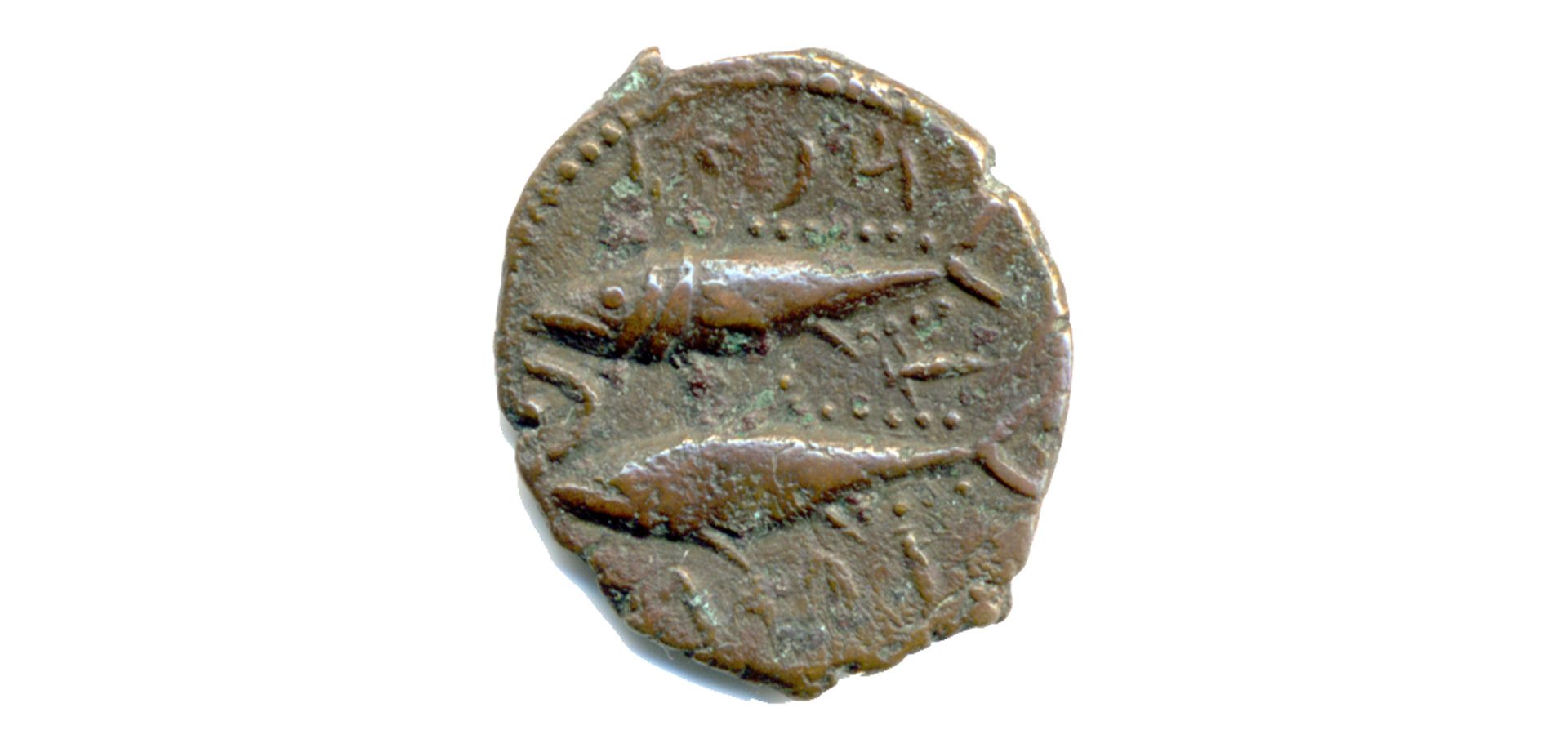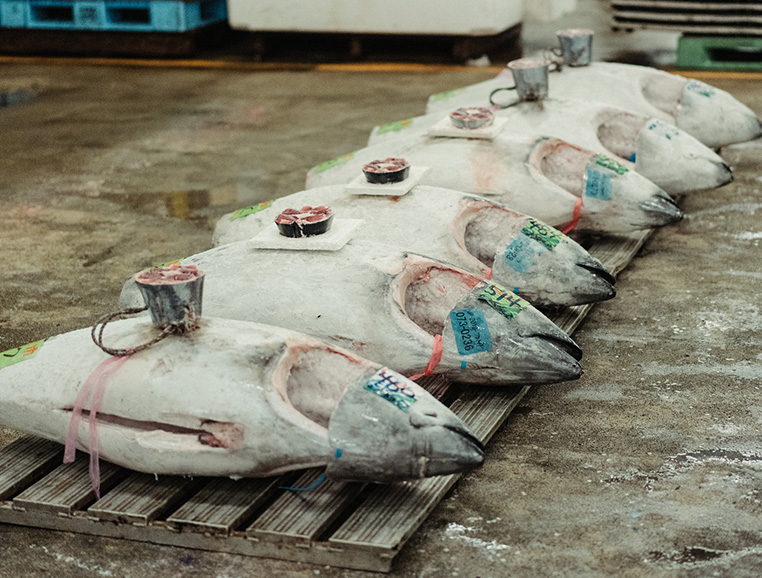In the Mediterranean basin, the Atlantic bluefin tuna has been exploited since the Neolithic period, as attested by the rock engravings in the caves of Levanzo Island, near Sicily (photo below, far right: it is a tuna and not a dolphin!).
It is also present on this Greco-Hispano-Carthaginian bronze coin (200 to 100 B.C.), originating from Gades or Carthago Nova, a Greek city in Spain. Coll. Oceanographic Institute.


A star of Japanese cuisine
Today, bluefin tuna is used to make sashimi and sushi for health-conscious Japanese consumers. Other tunas (skipjack, albacore, yellowfin) are used more in canned and other prepared and preserved products.
Premium bluefin tuna are reaching record prices. In January 2019, at the Tokyo New Year’s auction, a 278kg Pacific bluefin tuna (Thunnus orientalis cousin of the Atlantic bluefin tuna Thunnus thynnus), caught in northern Japan, was auctioned for an incredible 2.7 million euros!
Mediterranean tuna is exported...
In the Mediterranean basin, more than 20 countries exploit bluefin tuna, which makes it a highly shared marine resource that can only be managed within an international framework. Over the last two decades, 60% of the catches have been made by France, Spain, Italy and Japan, giving these countries a particular responsibility.
The vast majority of bluefin tuna caught in the Mediterranean by industrial fisheries is destined for aquaculture and the fattening activity that supplies the Japanese market.







